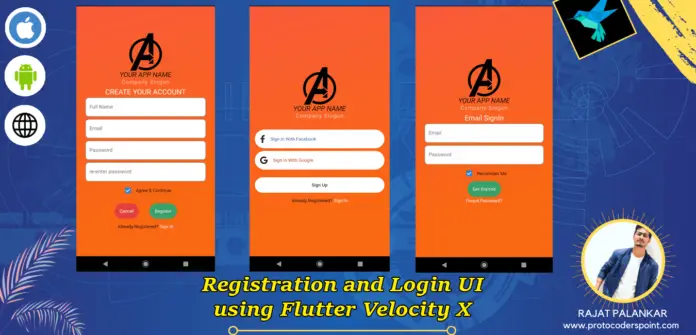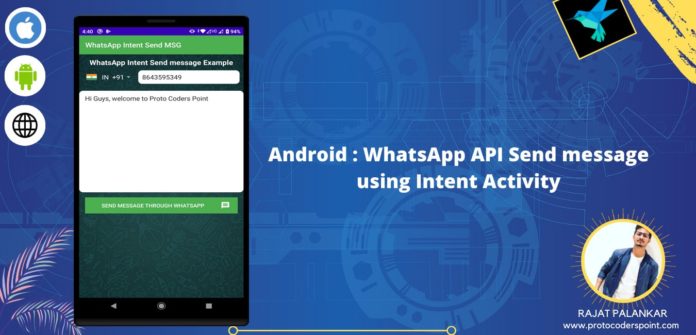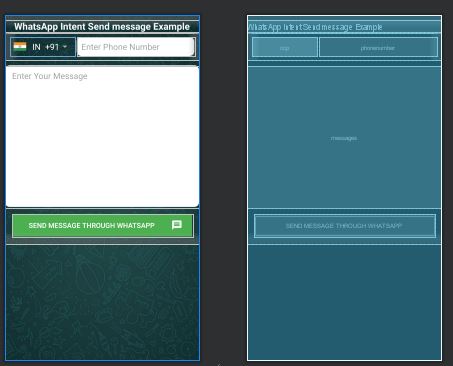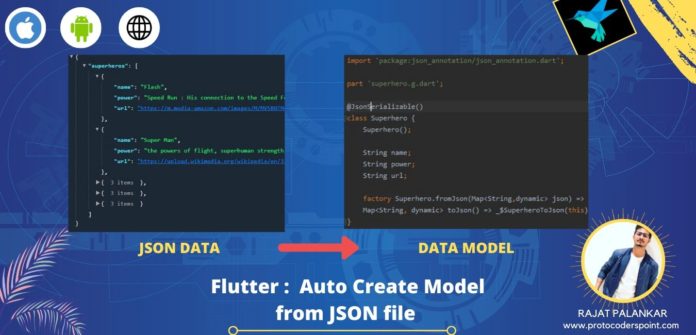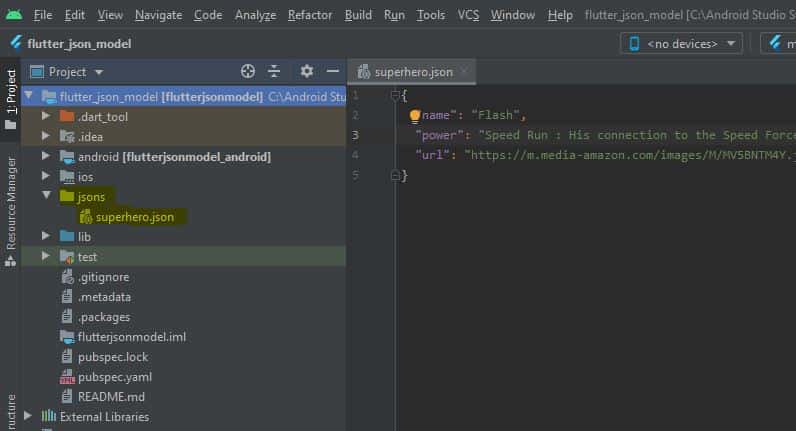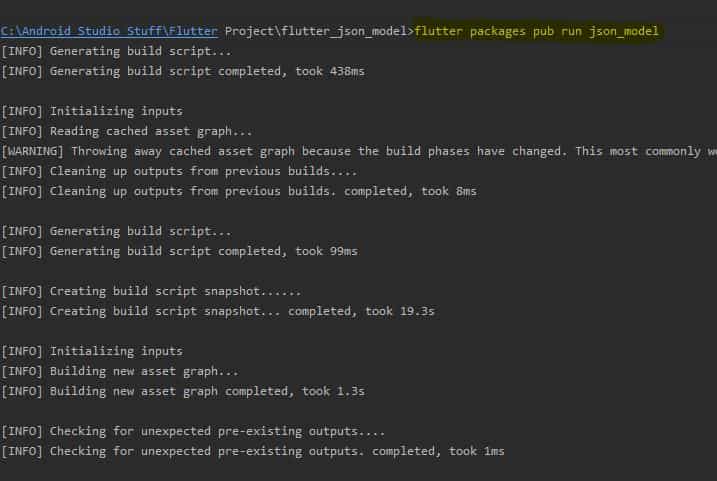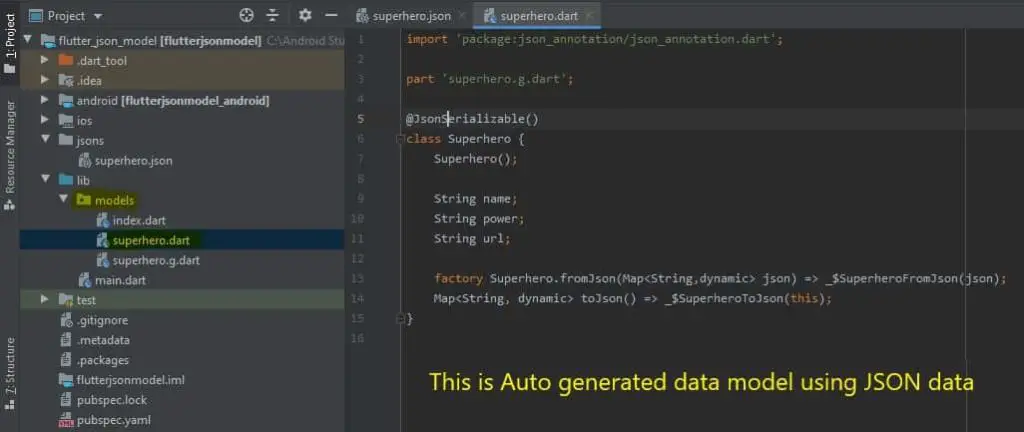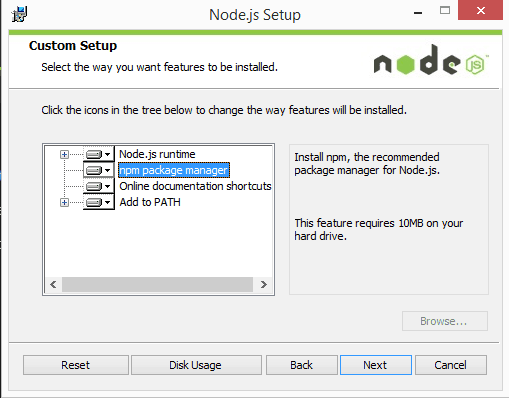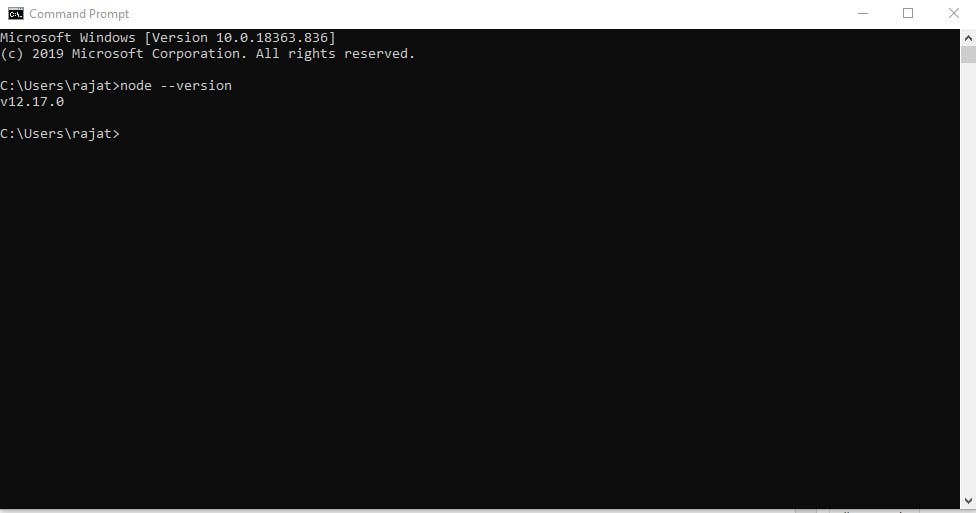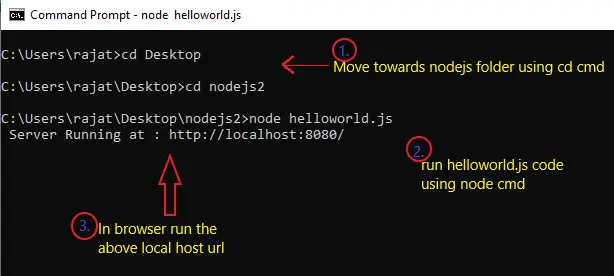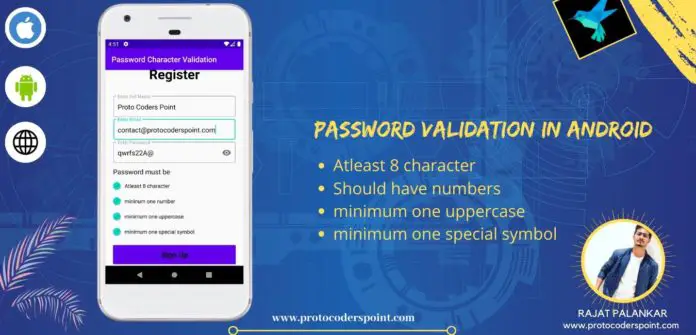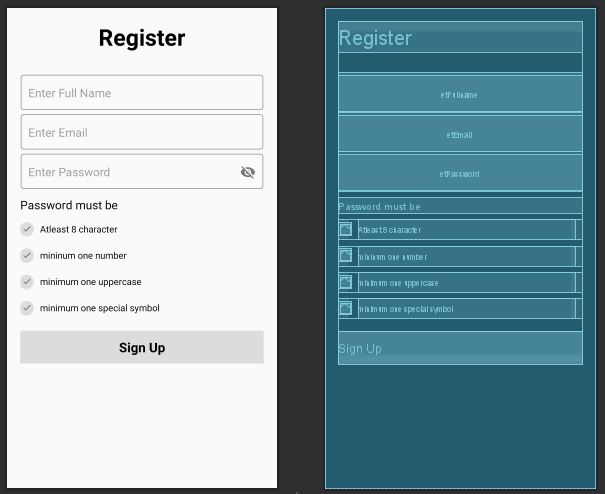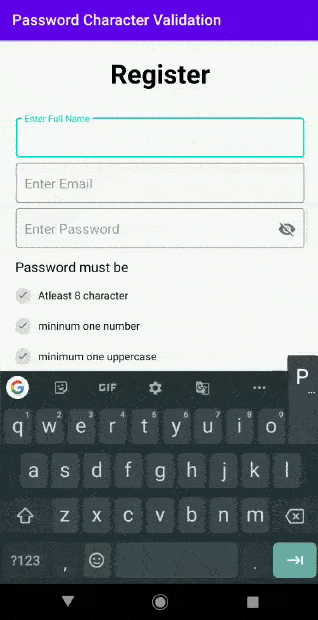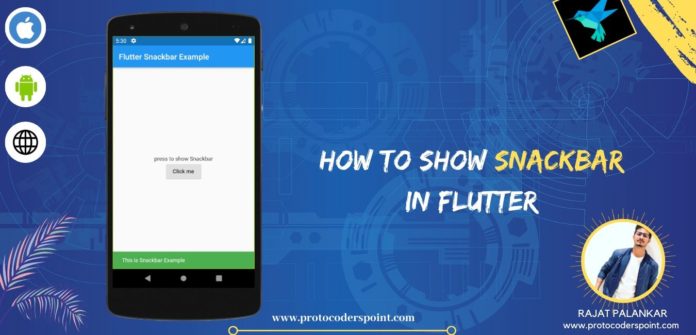Hi Guys, Welcome to Proto Coders Point, In this Flutter Tutorial we gonna design a Login and Registration UI Design by using “VELOCITY X” Flutter Library developed by Pawan Kumar using Flutter SDK.
What is Flutter Velocity X?
The Velocity X library in flutter development is a minimalist flutter framework that helps you in building custom Application design Rapidly.
Velocity X comes with various properties that we can apply to our flutter widget such as Color, Padding, Text , Box, Card, SizedBox and many more.
Basic of how to use Velocity X
How to use velocityX in Text Widget.
How to use velocity x Card on any Flutter Widgets
Login UI Screen using Velocity X Library.
Ok So let’s begin with Flutter to build Login and Registration UI Design.
Flutter Login and Registration UI design using Flutter Velocity X Library
Add Dependencies
dependencies: velocity_x: font_awesome_flutter:
Open pubspec.yaml file and all the above 2 dependencies line
velocityx: To make app designing faster
font_awesome_flutter: To use Icons such a FacebookF and Google Icons.
Project File Sturcture
In your Flutter Project under lib directory create 4 dart files.
main.dart : Here where user can SignIn through Social Media Directly.
Registration.dart : Here where user can Register himself though Email address.
SignInPage.dart : Sign In page where user can signIn using Email and Password
CommonLogo.dart : This class will return a Common Company Logo with Company name by using which we can just use it wherever required.
I have used CommonLogo Widget on all the above 3 pages.
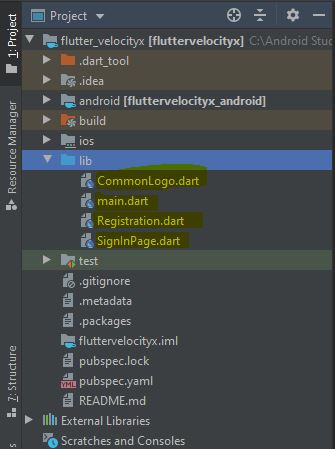
Just Create all the 4 dart file in your flutter project and add respective flutter dart code in it.
CommonLogo.dart
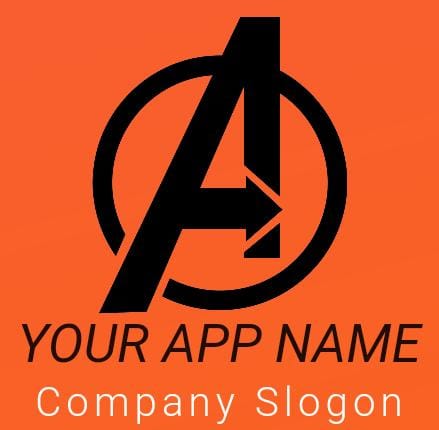
import 'package:flutter/material.dart';
import 'package:velocity_x/velocity_x.dart';
class CommonLogo extends StatelessWidget {
@override
Widget build(BuildContext context) {
return Column(
mainAxisAlignment: MainAxisAlignment.center,
children: <Widget>[
Image.network("https://pluspng.com/img-png/avengers-logo-png-avengers-logo-png-1376.png",width: 100,),
"YOUR APP NAME".text.xl2.italic.make(),
"Company Slogon".text.light.white.wider.lg.make(),
],
);
}
}
main.dart
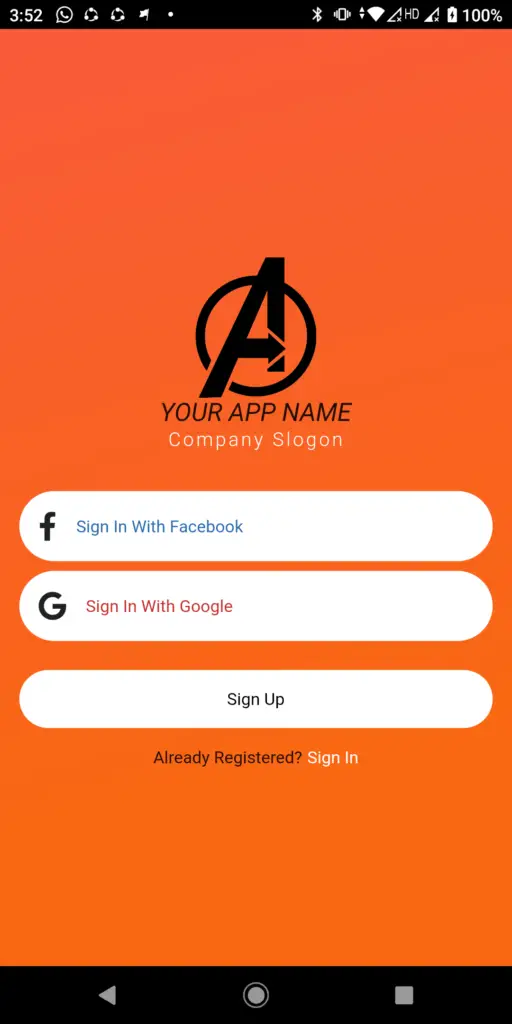
import 'package:flutter/material.dart';
import 'package:velocity_x/velocity_x.dart';
import 'package:font_awesome_flutter/font_awesome_flutter.dart';
import 'SignInPage.dart';
import 'CommonLogo.dart';
import 'Registration.dart';
void main() {
runApp(MyApp());
}
class MyApp extends StatelessWidget {
// This widget is the root of your application.
@override
Widget build(BuildContext context) {
return MaterialApp(
title: 'Flutter Demo',
debugShowCheckedModeBanner: false,
theme: ThemeData(
primaryColor: Colors.black,
visualDensity: VisualDensity.adaptivePlatformDensity,
),
home: SignIn(),
);
}
}
class SignIn extends StatefulWidget {
@override
_SignInState createState() => _SignInState();
}
class _SignInState extends State<SignIn> {
@override
Widget build(BuildContext context) {
return SafeArea(
child: Scaffold(
body: Container(
width: MediaQuery.of(context).size.width,
height: MediaQuery.of(context).size.height,
decoration: BoxDecoration(
gradient: LinearGradient(
colors: [const Color(0XFFF95A3B),const Color(0XFFF96713)],
begin: FractionalOffset.topLeft,
end: FractionalOffset.bottomCenter,
stops: [0.0,0.8],
tileMode: TileMode.mirror
),
),
child: Column(
mainAxisAlignment: MainAxisAlignment.center,
children: <Widget>[
CommonLogo().py24(),
HeightBox(10),
VxBlock(
children: <Widget>[
GestureDetector(
onTap: (){
print("Sign In with FaceBook");
},
child: VxBox(child:Row(children: <Widget>[
FaIcon(FontAwesomeIcons.facebookF).p16(),
"Sign In With Facebook".text.blue700.make()
],)).white.roundedLg.make().px16(),
),
VxBox(child:Row(children: <Widget>[
FaIcon(FontAwesomeIcons.google).p16(),
"Sign In With Google".text.red700.make()
],)).white.roundedLg.make().px16().py8(),
GestureDetector(
onTap:(){
print("SignUp");
Navigator.push(context, MaterialPageRoute(builder: (context)=>Registration()));
},child: VxBox(child: "Sign Up".text.black.makeCentered().p16()).white.roundedLg.make().px16().py16()),
GestureDetector(
onTap: (){
print("Sign In");
Navigator.push(context, MaterialPageRoute(builder: (context)=>SignInPage()));
},
child: HStack([
"Already Registered?".text.make(),
" Sign In".text.white.make()
]).centered(),
)
],
)
],
),
),
),
);
}
}
Registration.dart
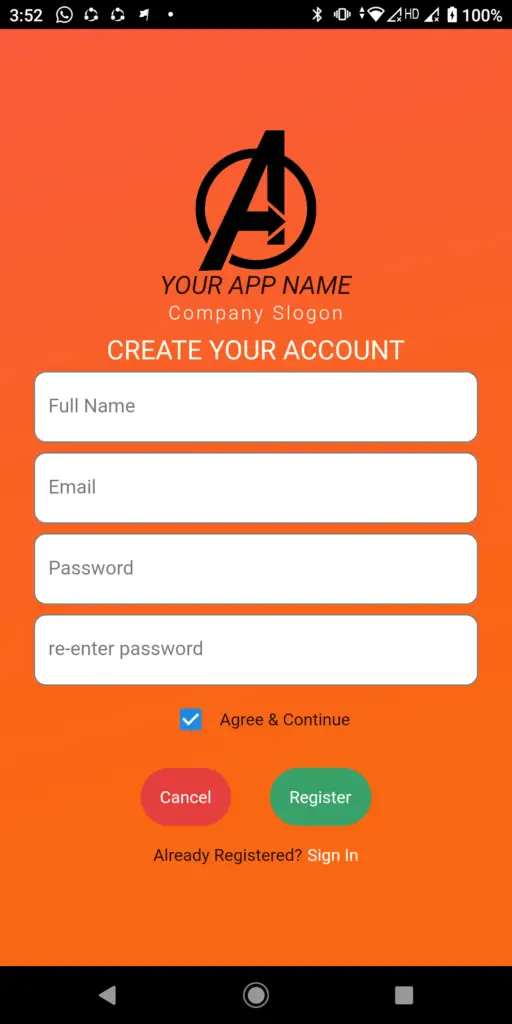
import 'package:flutter/material.dart';
import 'package:velocity_x/velocity_x.dart';
import 'package:font_awesome_flutter/font_awesome_flutter.dart';
import 'CommonLogo.dart';
import 'SignInPage.dart';
class Registration extends StatefulWidget {
@override
_RegistrationState createState() => _RegistrationState();
}
class _RegistrationState extends State<Registration> {
bool checked = true;
@override
Widget build(BuildContext context) {
return SafeArea(
child: Scaffold(
body: Container(
width: MediaQuery.of(context).size.width,
height: MediaQuery.of(context).size.height,
decoration: BoxDecoration(
gradient: LinearGradient(
colors: [const Color(0XFFF95A3B),const Color(0XFFF96713)],
begin: FractionalOffset.topLeft,
end: FractionalOffset.bottomCenter,
stops: [0.0,0.8],
tileMode: TileMode.mirror
),
),
child: Center(
child: SingleChildScrollView(
child: Column(
mainAxisAlignment: MainAxisAlignment.center,
children: <Widget>[
CommonLogo(),
HeightBox(10),
"CREATE YOUR ACCOUNT".text.size(22).yellow100.make(),
TextField(
keyboardType: TextInputType.text,
decoration: InputDecoration(
filled: true,
fillColor: Colors.white,
hintText: "Full Name",
border: OutlineInputBorder(
borderRadius: BorderRadius.all(Radius.circular(10.0)))),
).p4().px24(),
TextField(
keyboardType: TextInputType.text,
decoration: InputDecoration(
filled: true,
fillColor: Colors.white,
hintText: "Email",
border: OutlineInputBorder(
borderRadius: BorderRadius.all(Radius.circular(10.0)))),
).p4().px24(),
TextField(
keyboardType: TextInputType.text,
decoration: InputDecoration(
filled: true,
fillColor: Colors.white,
hintText: "Password",
border: OutlineInputBorder(
borderRadius: BorderRadius.all(Radius.circular(10.0)))),
).p4().px24(),
TextField(
keyboardType: TextInputType.text,
decoration: InputDecoration(
filled: true,
fillColor: Colors.white,
hintText: "re-enter password",
border: OutlineInputBorder(
borderRadius: BorderRadius.all(Radius.circular(10.0)))),
).p4().px24(),
HStack([
Checkbox(
value: checked, onChanged: (bool value) { checked=value ;},
),
"Agree & Continue".text.make().py16()
]),
HStack([
VxBox(child: "Cancel".text.white.makeCentered().p16()).red600.roundedLg.make().px16().py16(),
VxBox(child: "Register".text.white.makeCentered().p16()).green600.roundedLg.make().px16().py16(),
]),
GestureDetector(
onTap: (){
print("Sign In");
Navigator.push(context, MaterialPageRoute(builder: (context)=>SignInPage()));
},
child: HStack([
"Already Registered?".text.make(),
" Sign In".text.white.make()
]).centered(),
)
],
),
),
),
),
),
);
}
}
SignInPage.dart
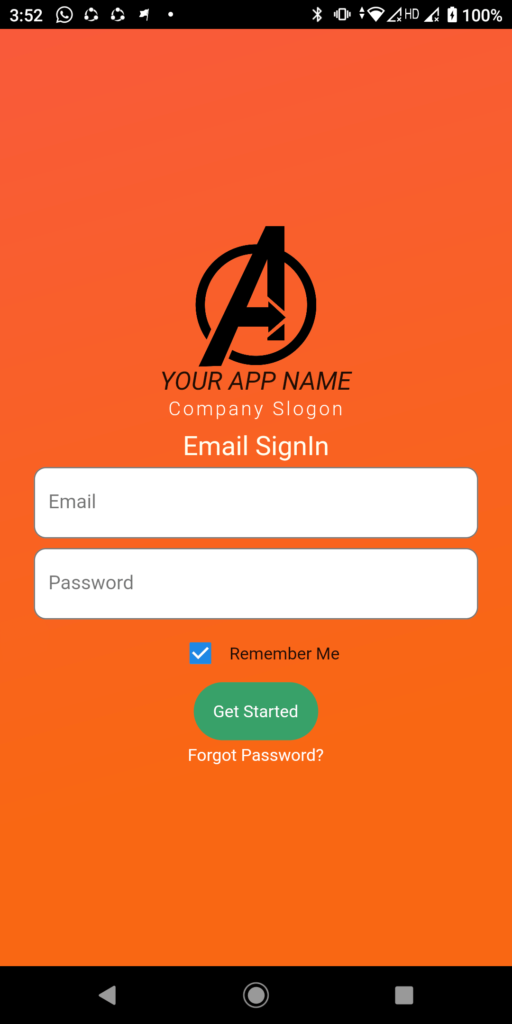
import 'package:flutter/material.dart';
import 'package:fluttervelocityx/Registration.dart';
import 'package:velocity_x/velocity_x.dart';
import 'package:font_awesome_flutter/font_awesome_flutter.dart';
import 'CommonLogo.dart';
class SignInPage extends StatefulWidget {
@override
_SignInPageState createState() => _SignInPageState();
}
class _SignInPageState extends State<SignInPage> {
bool checked = true;
@override
Widget build(BuildContext context) {
return SafeArea(
child: Scaffold(
body: Container(
width: MediaQuery.of(context).size.width,
height: MediaQuery.of(context).size.height,
decoration: BoxDecoration(
gradient: LinearGradient(
colors: [const Color(0XFFF95A3B),const Color(0XFFF96713)],
begin: FractionalOffset.topLeft,
end: FractionalOffset.bottomCenter,
stops: [0.0,0.8],
tileMode: TileMode.mirror
),
),
child: Center(
child: SingleChildScrollView(
child: Column(
mainAxisAlignment: MainAxisAlignment.center,
children: <Widget>[
CommonLogo(),
HeightBox(10),
"Email Sign-IN".text.size(22).yellow100.make(),
TextField(
keyboardType: TextInputType.text,
decoration: InputDecoration(
filled: true,
fillColor: Colors.white,
hintText: "Email",
border: OutlineInputBorder(
borderRadius: BorderRadius.all(Radius.circular(10.0)))),
).p4().px24(),
TextField(
keyboardType: TextInputType.text,
decoration: InputDecoration(
filled: true,
fillColor: Colors.white,
hintText: "Password",
border: OutlineInputBorder(
borderRadius: BorderRadius.all(Radius.circular(10.0)))),
).p4().px24(),
HStack([
Checkbox(
value: checked, onChanged: (bool value) { checked=value ;},
),
"Remember Me".text.make().py16()
]),
HStack([
VxBox(child: "Get Started".text.white.makeCentered().p16()).green600.roundedLg.make(),
]),
GestureDetector(
onTap: (){
print("Sign In");
},
child: HStack([
"Forgot Password?".text.white.makeCentered(),
]).centered().p4(),
),
HStack([
VxBox(child: FaIcon(FontAwesomeIcons.facebookF,color: Colors.white,size: 30,).p20()).blue700.roundedFull.make(),
VxBox(child: FaIcon(FontAwesomeIcons.google,color: Colors.white,size: 25,).p20()).red700.roundedFull.make().p4(),
])
],
),
),
),
),
bottomNavigationBar: GestureDetector(
onTap: (){
Navigator.push(context, MaterialPageRoute(builder: (context)=>Registration()));
},
child: Container(
height: 25,
color: Colors.lightBlue,
child: Center(child: "Create a new Account..! Sign Up".text.white.makeCentered())),
),
),
);
}
}
All set your Flutter application is ready with beautiful Login and Registration UI design using Velocity X library.

